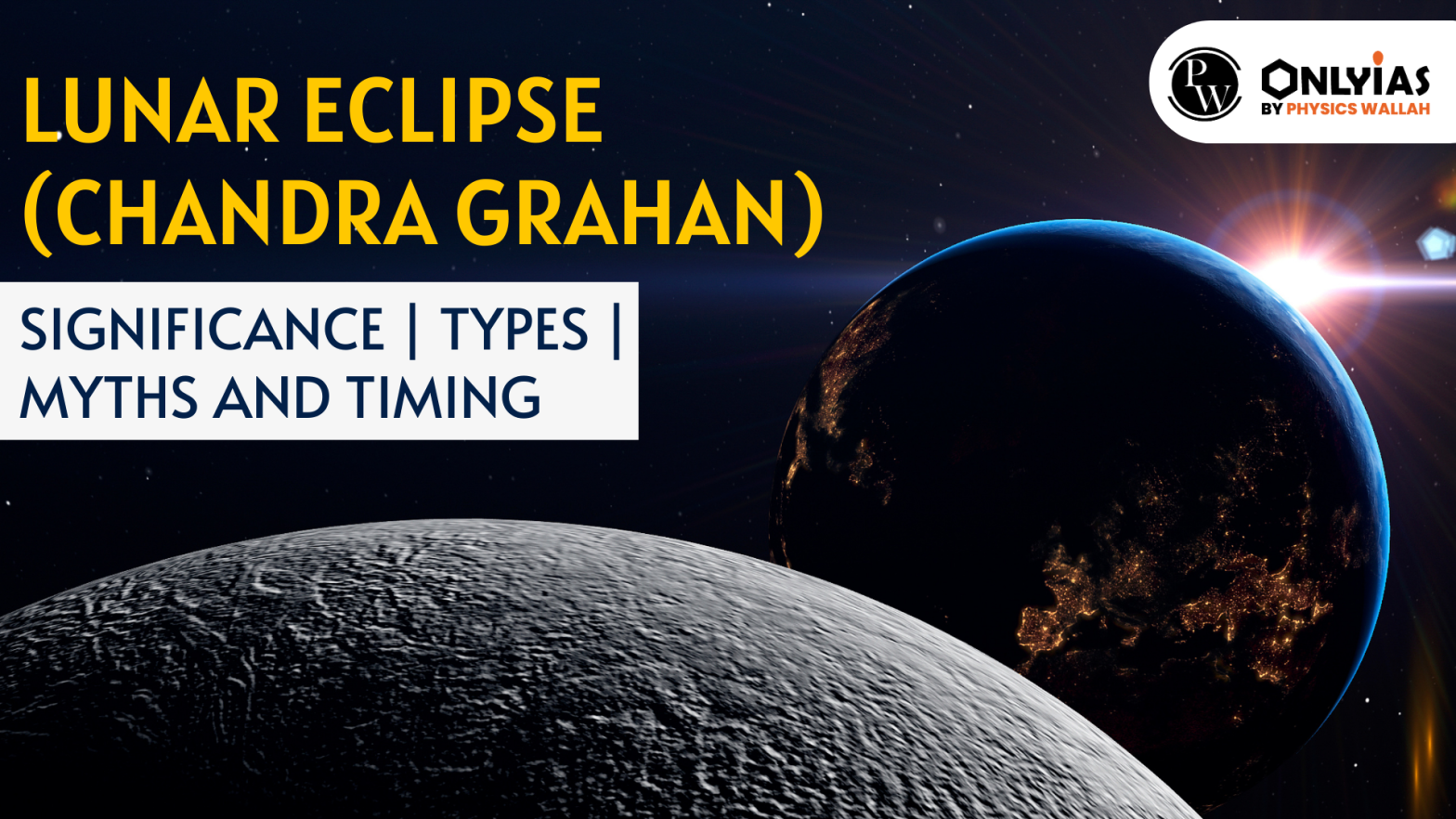Lunar Eclipse (Chandra Grahan) September 2025 will be a total lunar eclipse on 7th Sept, visible in India. The eclipse begins at 7:58 PM IST and ends at 1:18 AM IST. Know date, time, phases, Blood Moon effect, scientific facts, cultural beliefs, myths, and safety tips to watch this rare event.

A lunar eclipse, or Chandra Grahan, happens when the Earth comes between the Sun and the Moon, and blocks sunlight from reaching the Moon. This makes the Moon look dark, sometimes red, which is called a Blood Moon. Lunar eclipses have scientific importance as natural space events and hold cultural and spiritual significance in India. There are different types of lunar eclipses: total, partial, and penumbral, depending on how much of the Moon is covered by Earth’s shadow. Many traditional beliefs and stories surround lunar eclipses, but it is important to know the science behind this beautiful event and its exact timing to watch safely.
The lunar eclipse in September 2025 is a total lunar eclipse, meaning the Earth’s shadow will fully cover the Moon. This eclipse will happen on September 7, 2025. During the eclipse, the Moon will appear dark red, a phenomenon often called a Blood Moon. This event is special because it lasts for a long time, about 5 hours, with the total phase lasting around 82 minutes. It will be visible from many parts of Asia, including India, as well as Australia and parts of Africa.
In India, the lunar eclipse will begin in the evening on September 7 and continue into the night. The penumbral phase (start of Earth’s shadow on the Moon) will start around 7:58 pm IST. The partial eclipse will begin around 8:57 pm IST, and the total eclipse will start at 9:59 pm IST. The middle of the total eclipse will be at 10:38 pm IST, and totality will end at 11:16 pm IST. The partial phase will end at 12:18 am IST on September 8, and the eclipse will fully end around 1:18 am.
Chandra Grahan, or the lunar eclipse, will be on September 7, 2025, visible in India in the night hours. It is called Chandra Grahan because the Earth comes between the Sun and the Moon, blocking the sunlight from reaching the Moon directly. The reddish color of the Moon during totality happens because the Earth’s atmosphere bends sunlight and filters out blue light, leaving a red tint. This eclipse starts at 7:58 pm IST and ends around 1:18 am IST the next day in India. It is a safe and natural astronomical event that many people enjoy watching.
What is Lunar Eclipse (Chandra Grahan): Earth’s Shadow on the Moon?
| Must Read | |
| NCERT Notes For UPSC | UPSC Daily Current Affairs |
| UPSC Blogs | UPSC Daily Editorials |
| Daily Current Affairs Quiz | Daily Main Answer Writing |
| UPSC Mains Previous Year Papers | UPSC Test Series |
A lunar eclipse (Chandra Grahan) is an astronomical event where the Moon is darkened when it moves into the Earth's shadow. Moon’s visibility is affected due to this event.
During a Solar eclipse, the moon passes between Sun and the Earth while during a lunar eclipse, the Earth passes between the Sun and the Moon.
Tidal effects on Earth are at the highest during the full moon and lunar eclipse (Chandra Grahan) as the Sun and Moon are in line with Earth.
Total lunar eclipse, Partial lunar eclipse, and Penumbral lunar eclipse are different types of lunar eclipses.
The effect of a lunar eclipse is felt on the tides on Earth, the wildlife as well as cultural behavior of humans.
The Lunar Eclipse in September 2025 will occur on the night of September 7th and early morning of September 8th. In India, the eclipse will start around 7:58 PM IST and the total eclipse phase will last from 11:00 PM to 12:22 AM IST. The event will be visible across the country and last about 3 hours and 30 minutes.
<div class="new-fform">
</div>
